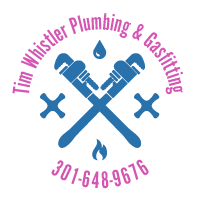Read About Us and Galvanized Piping In The Washington Post
Do I have to replace all the galvanized pipes in my 1940s house?
Q: I live in a 1940s house that has galvanized pipes. The cold-water tap in the bathtub has become blocked. A plumber said debris is clogging the pipe, and the only thing I can do is repipe the whole house. Is this my only option?
Silver Spring, Md.
A: There are a couple of other options, but, in the end, the best one is probably what the plumber recommended. Galvanized pipes, which were used for decades, are made of steel with a coating of zinc, inside and out, to keep the steel from rusting. But over the decades, minerals in water gradually eat away the zinc, and the coating itself wears down from the friction of passing water. Wherever the zinc wears through, rust can form and build up. Rust takes up more space than steel, so the corrosion eventually fills up the pipe. “It’s a rusty, crusty mess,” said Tim Whistler, owner of Tim Whistler Plumbing & Gas Fitting (301-648-9676; timwhistlerplumbing.com), which works in parts of Maryland and Washington.
No piping system lasts forever. Many plumbing websites say galvanized pipes have a life expectancy of 40 to 50 years, while others say 80 to 100. Clearly, the lower range wasn’t accurate for the pipes in your house. But at 80 or older, the clock is ticking.
You can find advice online about unclogging galvanized pipes by injecting compressed air to force out debris. But this can just shove the mess farther down the line, where it can collect in plumbing bends or clog up faucets, Whistler said. It wouldn’t fix any rust that has formed at threaded joints. And because the pipes are hidden behind walls, there would be no way to know whether the air pressure had blasted through weak spots where the steel was mostly rusted through — until you switched the water back on, only to discover soggy walls, floors or ceilings.
More in the Article re-print below:
